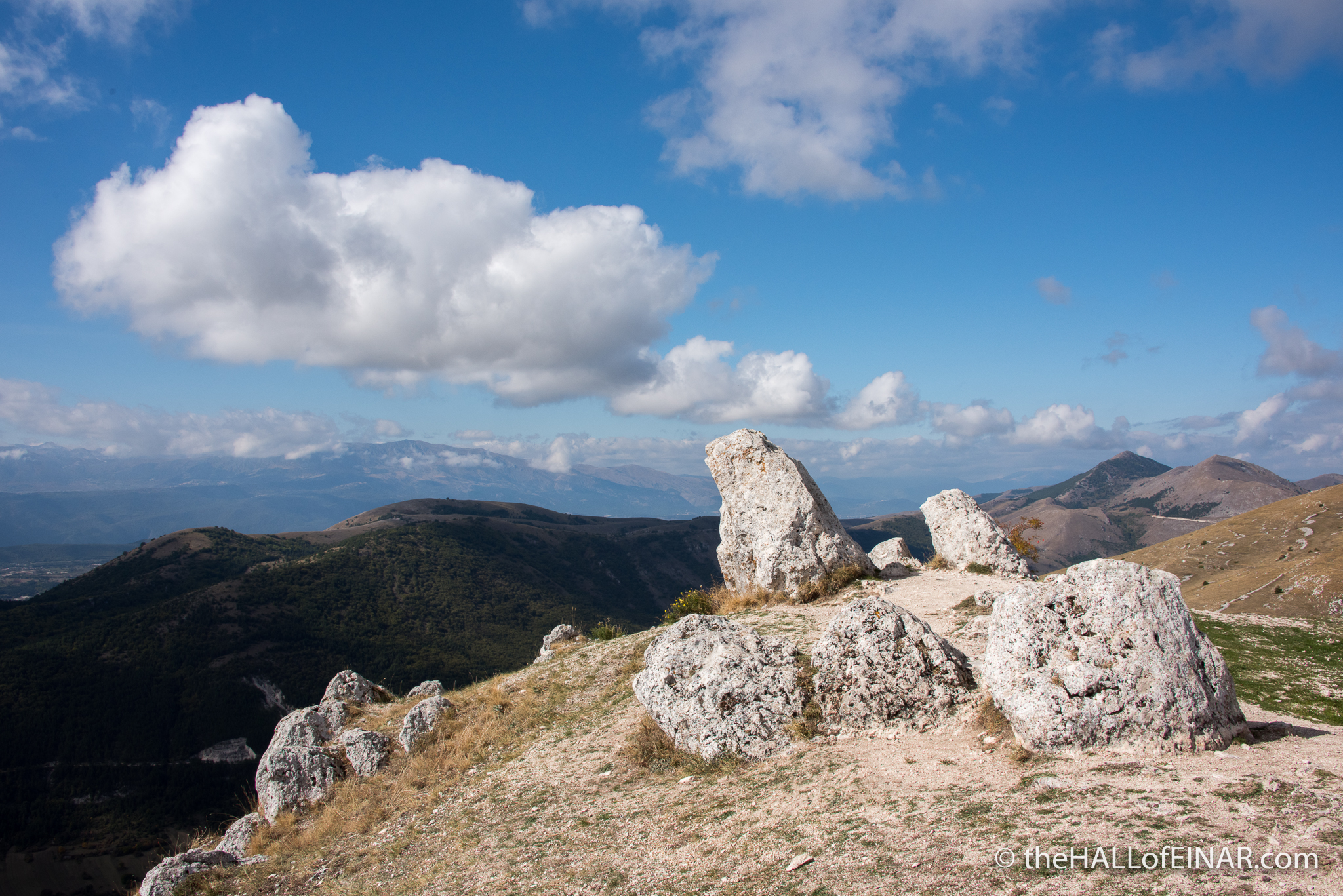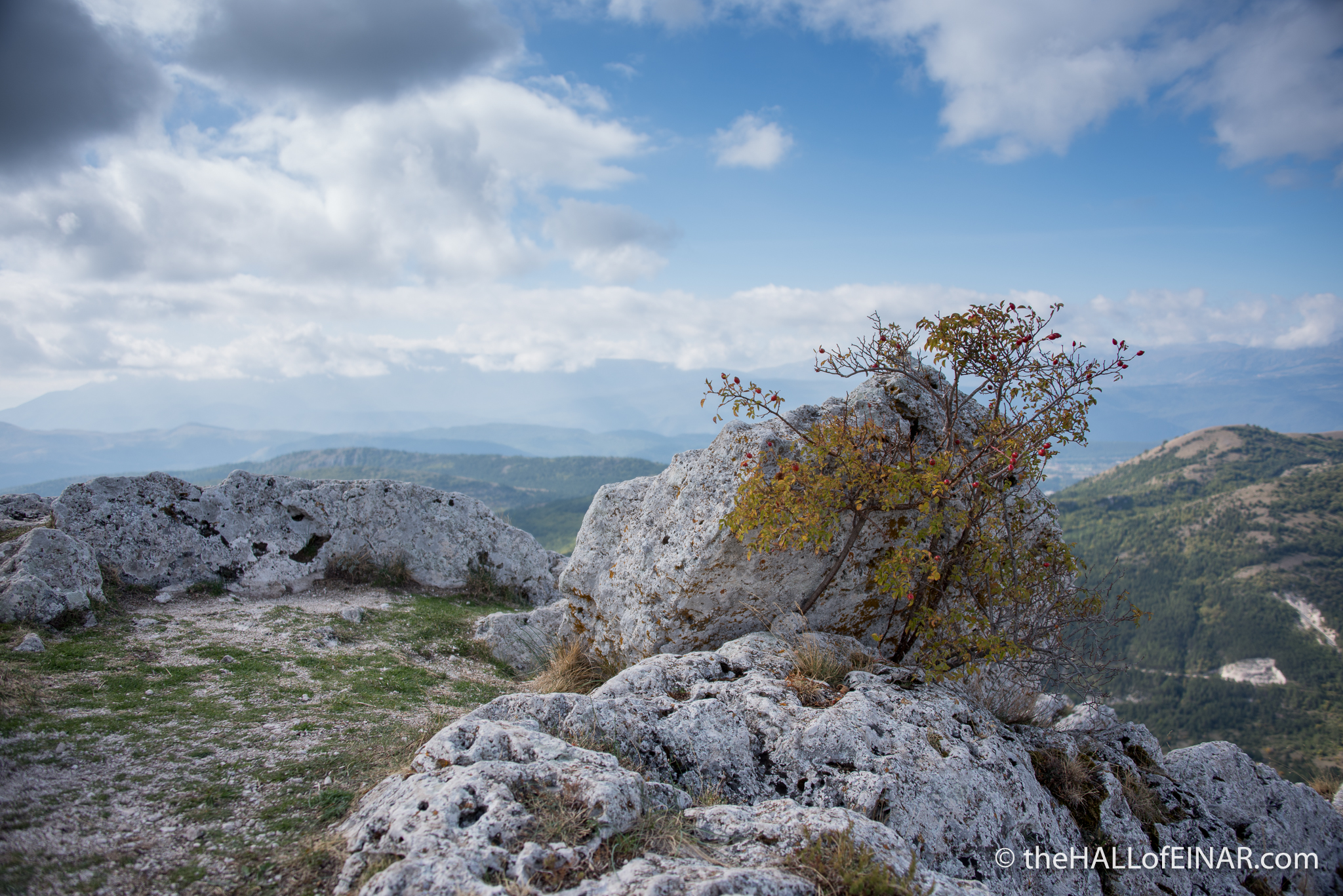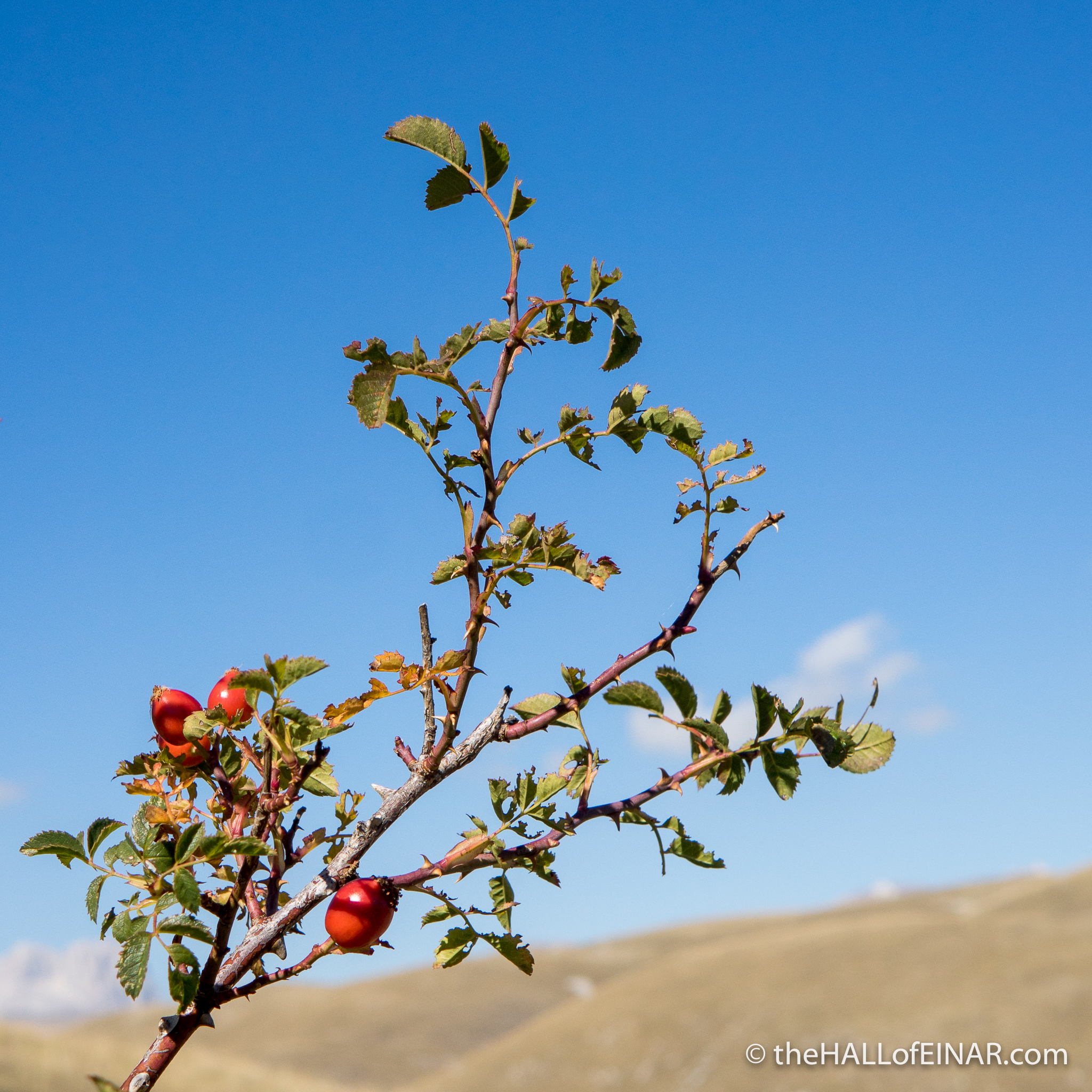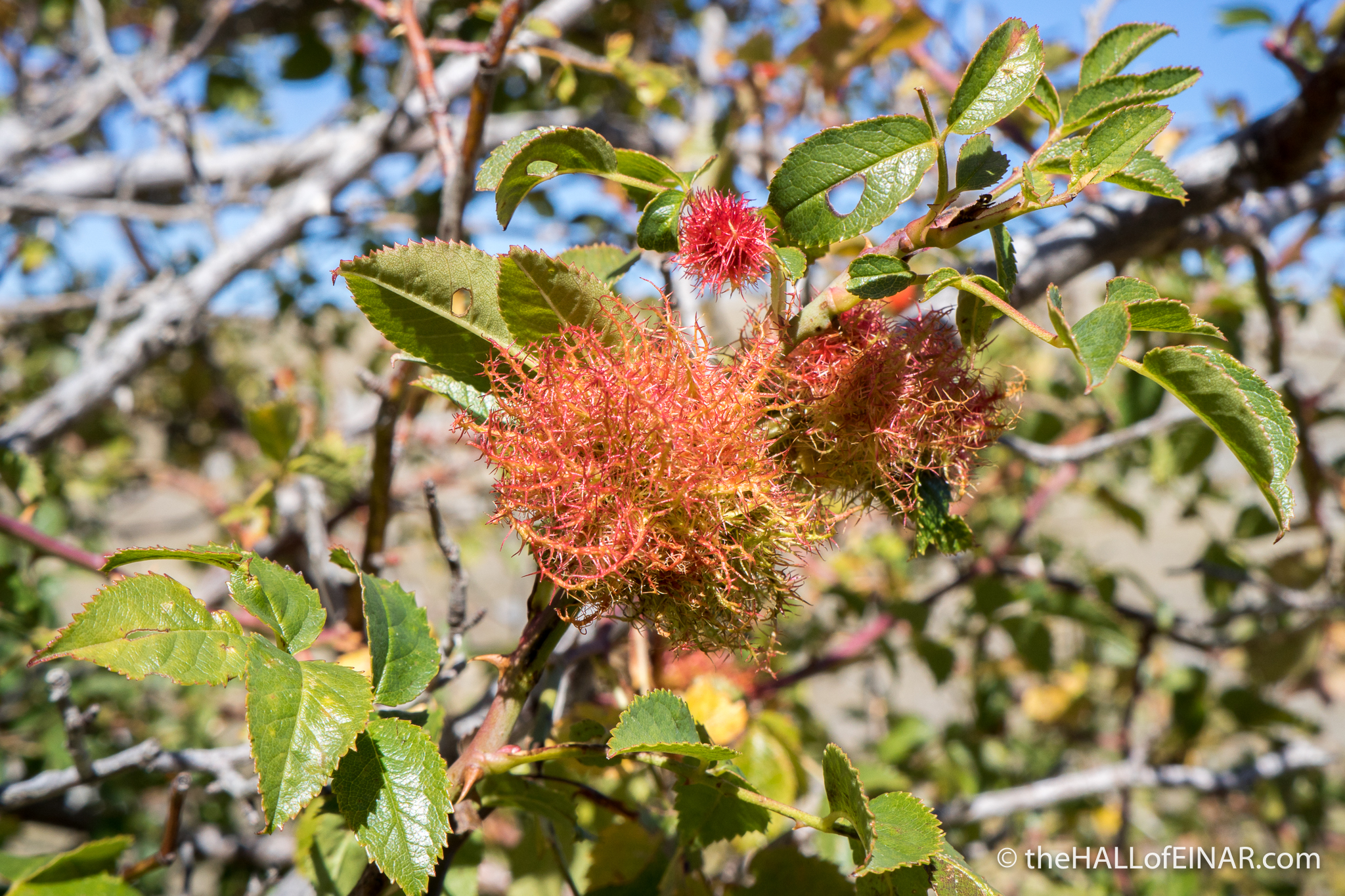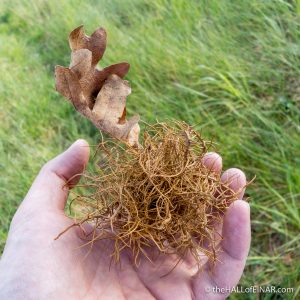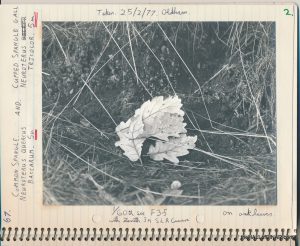Robin’s Pincushions on Wild Roses
The ability of life to survive in the harshest of climates is remarkable. We’re walking at 1,500m above sea level and winters here at Rocca Calascio must be bitterly cold. I can just see a wild rose bush at the top of the hill where there is a rocky outcrop.
It is hidden behind the exposed limestone on a beautiful day.
Looking across the valley I can see red bushes all the way along the path. They are covered in rose-hips. The hips are the rose’s way of getting its seeds dispersed by providing a tasty meal for birds; or at least it would be if birds had a well developed sense of taste:
On one of the rose bushes I can see a strange growth which I suspect is a gall. Galls are a plant’s reaction to having an attack by insects living within them. There are many species of small wasps which have grubs which develop within plants and which provoke a huge reaction from their host. When I say many I mean 380 different species in Europe.
In this case it’s the Rose Gall Wasp Diplolepis rosae which has produced these Rose Bedeguar Galls, also known as Robin’s Pincushions.
Scientists have yet to discover the details of the chemical response which causes such identical intricate reactions when a gall wasp lays its eggs inside the rose.
The Rose Gall Wasp is interesting because they are nearly always female and often reproduce without a male at all. They are only 3mm long and easier to identify by their galls than they are from a specimen of the wasp itself. The grubs will be safe inside the rose all winter.
The name Bedeguar is from Persian for ‘wind-brought’ and the Robin of Robin’s Pincushion is Robin Goodfellow, a mischievous sprite. Robin is the source of all the mischief in A Midsummer Night’s Dream. Both are romantic tales and I’m tempted to think that it wasn’t the wind and it wasn’t Robin Goodfellow’s mischief that made these galls, it was a tiny wasp. It did come on the wind though and it did make mischief so maybe there’s some truth in these stories after all.
More Galls
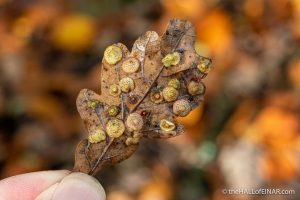 Spangle Galls This fallen oak leaf is covered in galls. They look like they're caused by Neuroterus quercusbaccarum, which has injected eggs… read more
Spangle Galls This fallen oak leaf is covered in galls. They look like they're caused by Neuroterus quercusbaccarum, which has injected eggs… read more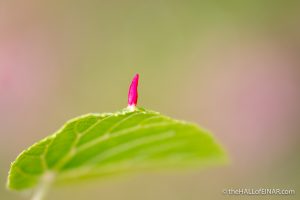 Lime Nail Galls Those look like Lime trees. I'm not sure though. They're in the grounds of Forde House, a luxury Jacobean manor… read more
Lime Nail Galls Those look like Lime trees. I'm not sure though. They're in the grounds of Forde House, a luxury Jacobean manor… read more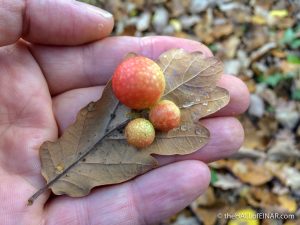 Cherries on an Oak There are Cherry Galls, Cynips quercusfolii, on this fallen Oak leaf. Inside each are tiny wasp larvae, protected by the Oak's… read more
Cherries on an Oak There are Cherry Galls, Cynips quercusfolii, on this fallen Oak leaf. Inside each are tiny wasp larvae, protected by the Oak's… read more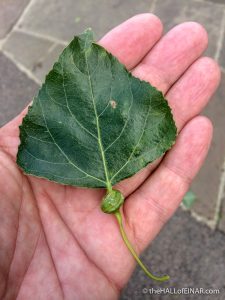 A fortress on the stalk of a leaf It doesn't look like much. After all, it's just a bulge on a stalk of a leaf, scattered on the… read more
A fortress on the stalk of a leaf It doesn't look like much. After all, it's just a bulge on a stalk of a leaf, scattered on the… read more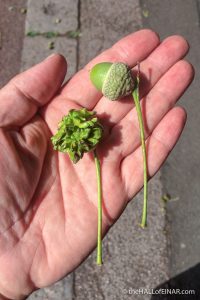 Have you seen my peduncle? English Oaks take 40 years to produce their first acorns and don't reach 'peak acorn' until they are 100 years… read more
Have you seen my peduncle? English Oaks take 40 years to produce their first acorns and don't reach 'peak acorn' until they are 100 years… read more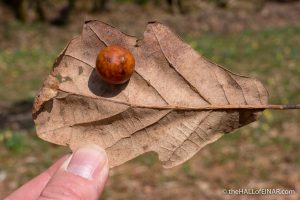 Cherries growing on Oak trees There are Cherry Galls, Cynips quercusfolii, on the fallen Oak leaves here in Bridford Wood. They are the tree's defensive… read more
Cherries growing on Oak trees There are Cherry Galls, Cynips quercusfolii, on the fallen Oak leaves here in Bridford Wood. They are the tree's defensive… read more